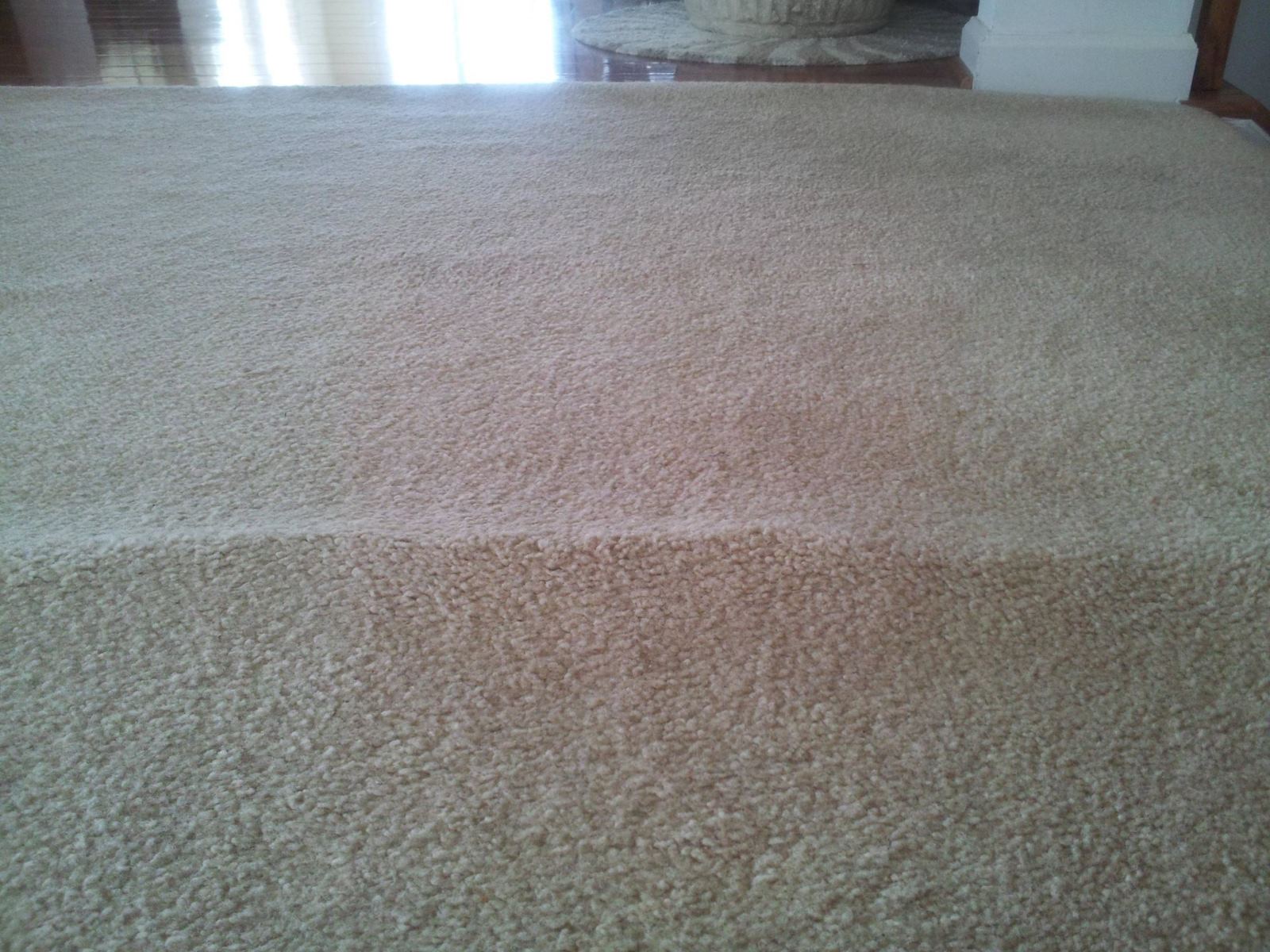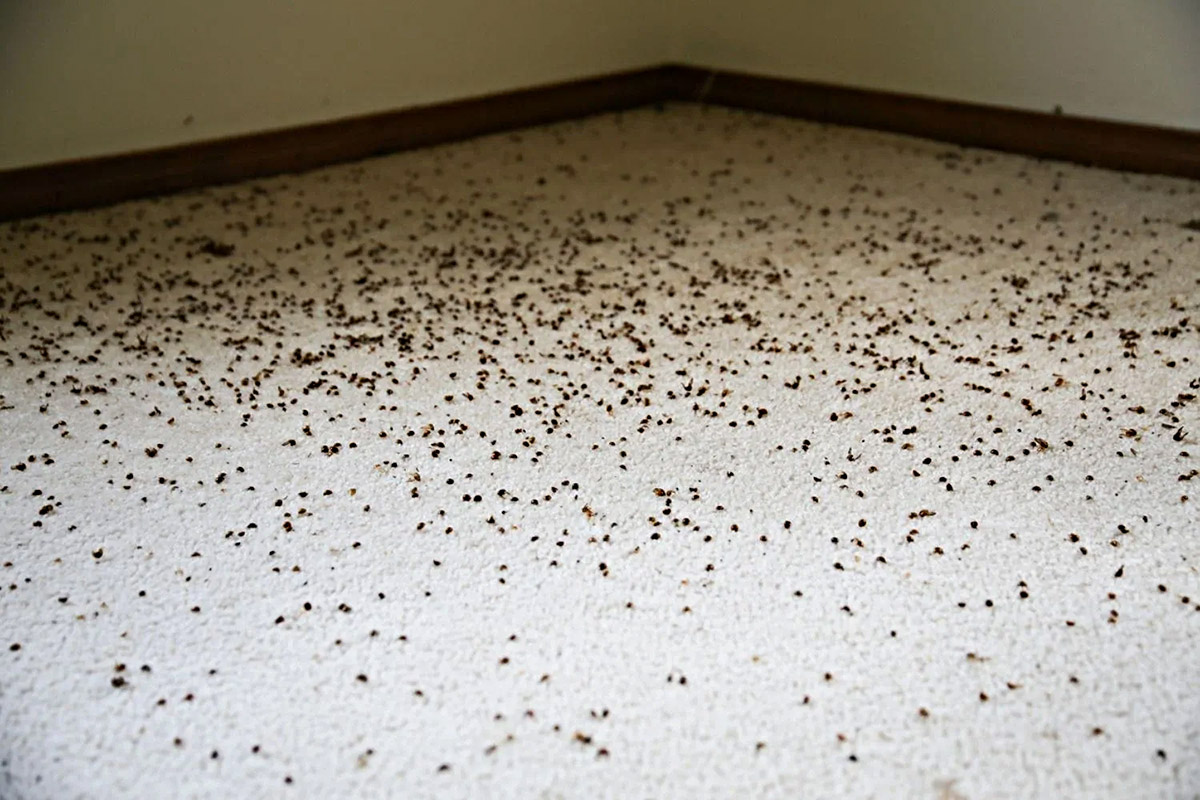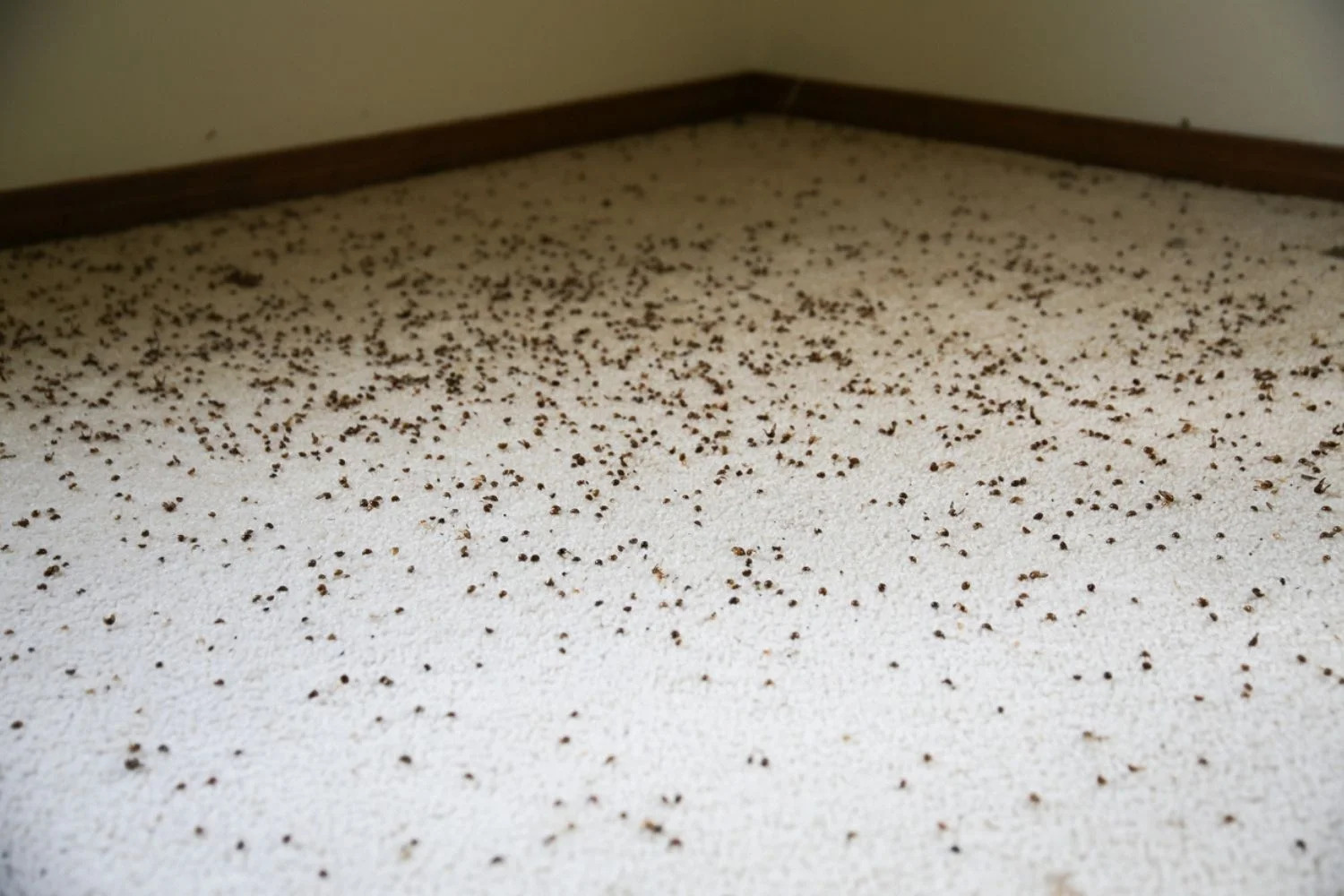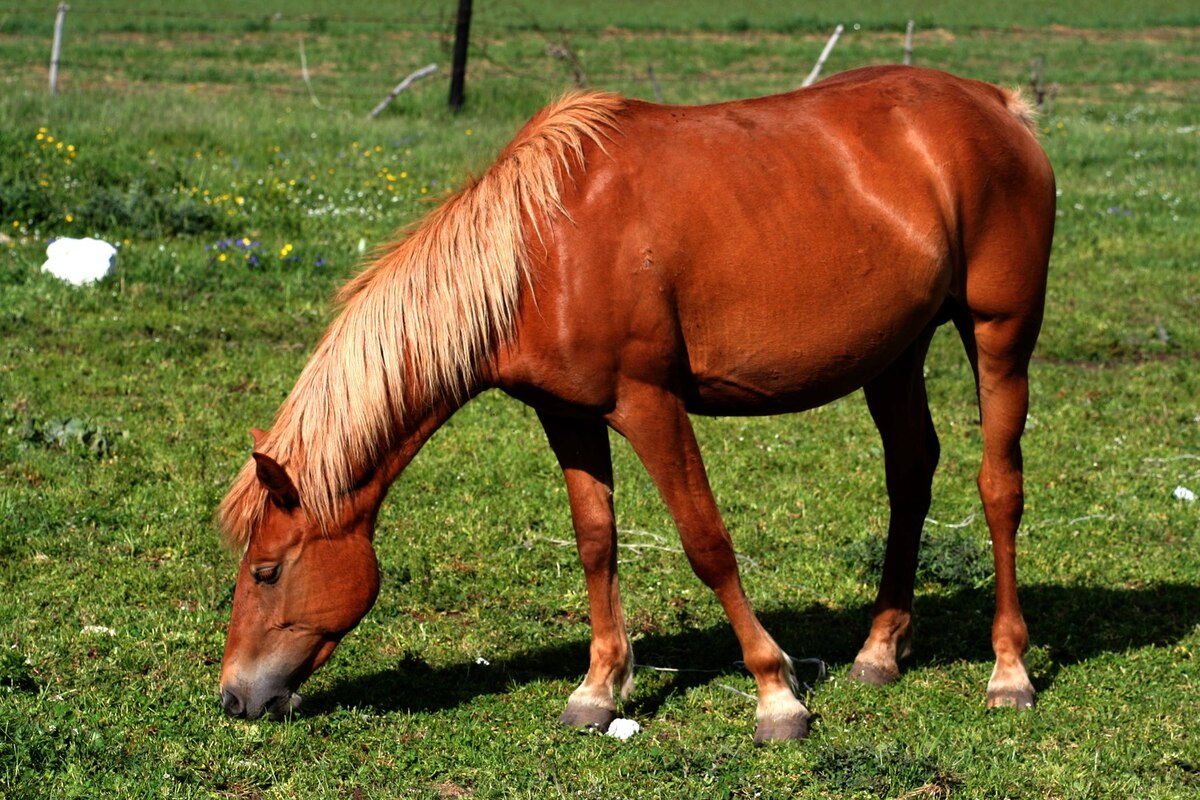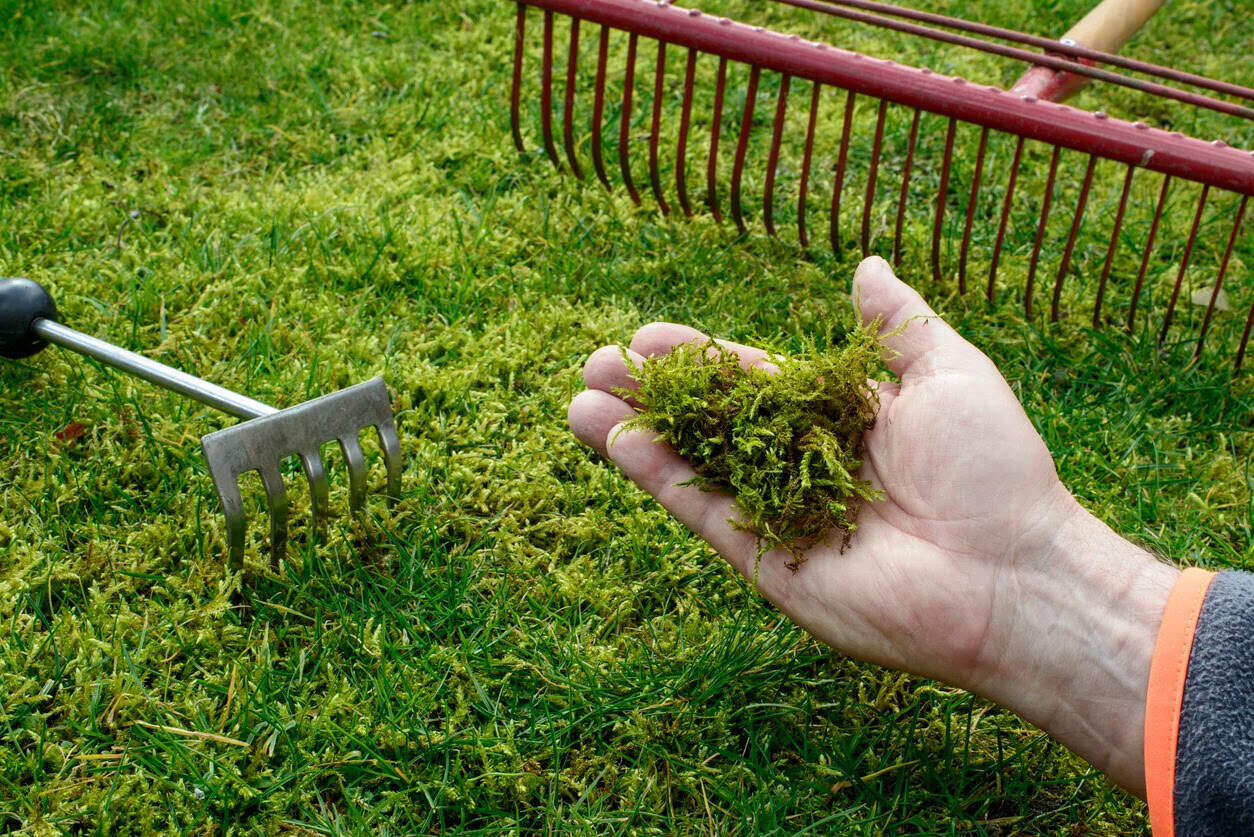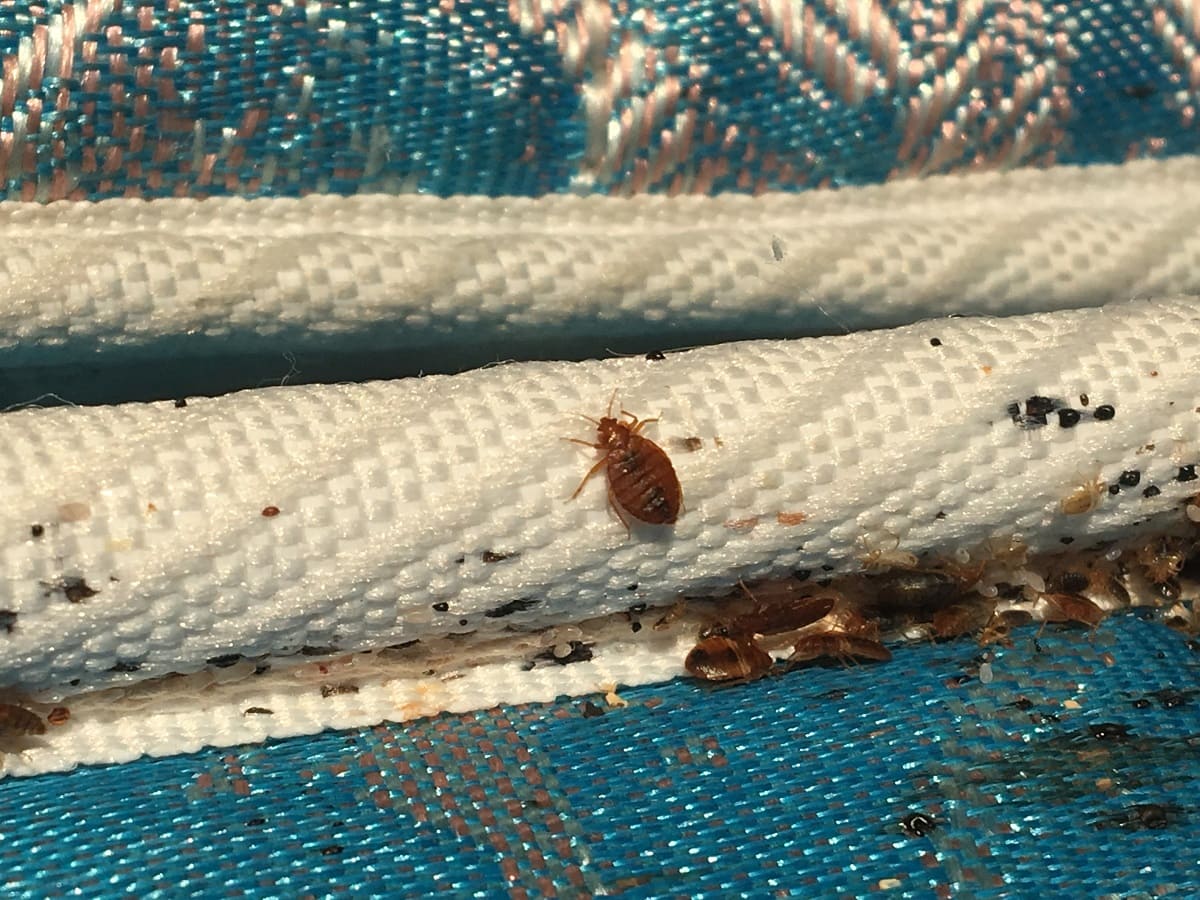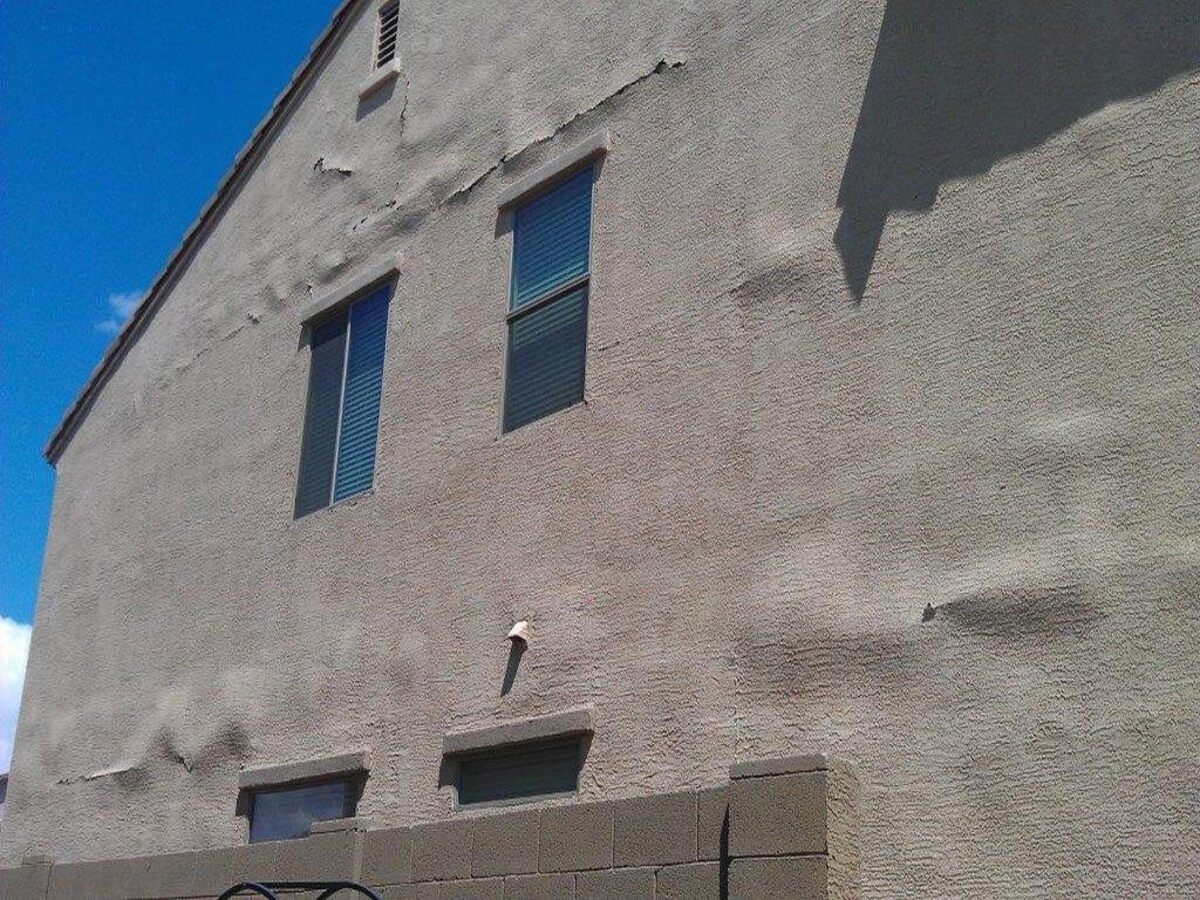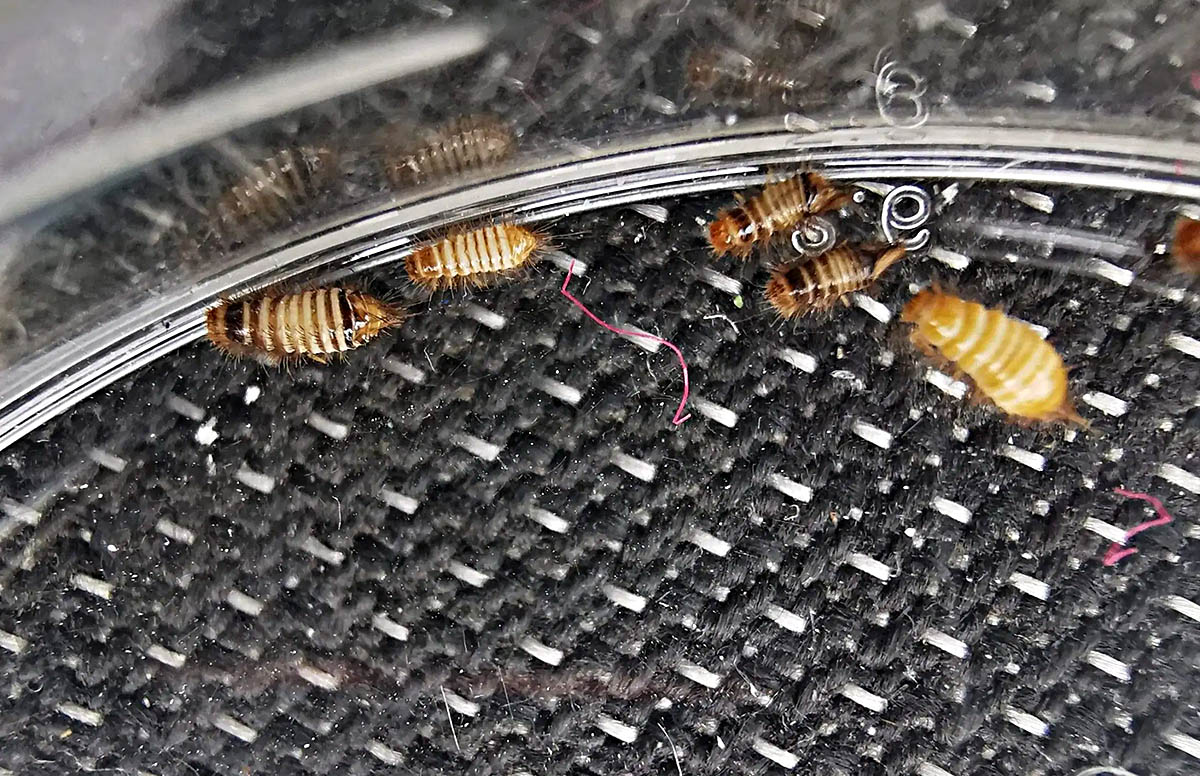

Articles
What Causes Carpet Beetles
Modified: January 9, 2024
Discover the main causes of carpet beetles with informative articles. Learn how to prevent and eliminate these pests to protect your carpets and belongings.
(Many of the links in this article redirect to a specific reviewed product. Your purchase of these products through affiliate links helps to generate commission for Storables.com, at no extra cost. Learn more)
Introduction
Carpet beetles are small, oval-shaped insects that can cause significant damage to carpets, clothing, and other textiles in your home. These pesky pests are often overlooked until their presence becomes noticeable through holes in fabric or damage to your precious belongings. Understanding what causes carpet beetles and how to prevent or eliminate an infestation is crucial to protect your property.
In this article, we will delve into the world of carpet beetles, exploring their life cycle, common species, signs of infestation, and effective control methods. By gaining a comprehensive understanding of these pests, you can take proactive measures to keep your carpets and belongings safe.
So, let’s dive in and learn more about what causes carpet beetles!
Key Takeaways:
- Understanding the life cycle, common species, and signs of carpet beetle infestations is crucial for proactive prevention and effective control methods to safeguard your home and belongings.
- Maintaining a clean, clutter-free environment, addressing moisture issues, and seeking professional assistance when needed are key strategies to prevent and eliminate persistent carpet beetle infestations, ensuring a pest-free home.
Read more: What Does A Carpet Beetle Look Like
Understanding Carpet Beetles
Carpet beetles, scientifically known as Anthrenus verbasci, are small insects that belong to the family Dermestidae. They measure between 2 to 5 millimeters in length and are often mistaken for bed bugs due to their similar appearance. However, unlike bed bugs, carpet beetles do not bite humans or spread diseases.
These beetles have distinct patterns on their wing covers, with colors ranging from black, brown, white, and yellow. While adult carpet beetles primarily feed on pollen and nectar from flowers, it is the larvae that cause the most damage to fabrics and textiles.
The larvae of carpet beetles are small, hairy, and carrot-shaped. They have a voracious appetite and feed on a variety of organic materials, including wool, fur, silk, feathers, and even food crumbs. They can thrive in dark, undisturbed areas such as closets, attics, and storage spaces.
Carpet beetle infestations can spread rapidly if left untreated, and the damage they cause can be extensive. They have a strong preference for natural fibers, as they provide the larvae with the necessary nutrients for growth and development. Synthetic materials, such as polyester or nylon, are less attractive to carpet beetles.
It’s important to note that carpet beetles are not exclusive to carpets. They can also infest furniture, curtains, bedding, and even stored clothing. Therefore, it is crucial to be vigilant and take appropriate measures to control and prevent carpet beetle infestations.
Life Cycle of Carpet Beetles
To effectively control carpet beetles, it is essential to understand their life cycle. Carpet beetles undergo a complete metamorphosis, meaning they go through four distinct stages: egg, larva, pupa, and adult.
Egg Stage: The life cycle of carpet beetles begins with the adult female laying eggs. A single female can lay anywhere from 40 to 100 eggs, which are tiny and difficult to detect with the naked eye. The eggs are usually laid in dark, hidden areas near a food source, such as carpets, furniture, or stored textiles. The eggs hatch within 6 to 11 days, depending on environmental conditions.
Larval Stage: Once the eggs hatch, the carpet beetle larvae emerge. This stage is when most of the damage is done. The larvae are often called “woolly bears” due to their fuzzy appearance. They have a bristly covering of hair-like setae, which helps protect them from predators. The larvae feed voraciously on organic materials, molting several times as they grow. This stage typically lasts for several months, during which time the larvae can cause significant damage to carpets, clothing, and other textiles.
Pupa Stage: After the larvae have completed their growth, they enter the pupa stage. During this stage, the larvae spin a protective cocoon or casing around themselves, transforming into a pupa. The pupa is inactive and undergoes internal changes as it develops into an adult beetle. This stage can last for about 2 to 3 weeks.
Adult Stage: Once the pupa development is complete, the adult carpet beetles emerge from the cocoon. The adult beetles are typically small and oval-shaped. Unlike the larvae, they do not feed on textiles and are primarily focused on mating and reproduction. The adult stage of carpet beetles can last for a few weeks to several months, depending on environmental conditions.
It’s important to note that the life cycle of carpet beetles can vary depending on factors such as temperature, humidity, and food availability. Understanding the life cycle is crucial for effective control and prevention measures, as targeting each stage appropriately can help break the life cycle and reduce the chances of a recurring infestation.
Common Species of Carpet Beetles
There are several species of carpet beetles that are commonly encountered in households. These species differ in appearance, feeding habits, and preferred habitats. Here are some of the most common species:
1. Varied Carpet Beetle (Anthrenus verbasci): This species is one of the most widespread and damaging carpet beetles. The adult beetles are small, measuring around 2 to 4 millimeters in length. They have a mottled appearance with patches of white, brown, and black on their wing covers. Varied carpet beetle larvae feed on a wide range of organic materials, including carpets, clothing, upholstery, and even stored food products.
2. Black Carpet Beetle (Attagenus unicolor): As the name suggests, this species of carpet beetle is primarily black in color. The adult beetles are slightly larger than varied carpet beetles, measuring around 3 to 5 millimeters. Black carpet beetle larvae are known for their destructive feeding habits, particularly on wool, silk, and other natural fibers. They are also attracted to dried insect specimens, which can make them a nuisance in museum collections.
3. Furniture Carpet Beetle (Anthrenus flavipes): This species is similar in appearance to the varied carpet beetle, with adults measuring around 3 to 4 millimeters. Furniture carpet beetle larvae are known for their ability to digest keratin, a protein found in animal-based materials such as feathers, fur, and hides. They can cause extensive damage to upholstered furniture, curtains, and other household items made with animal-based fabrics.
4. Common Carpet Beetle (Anthrenus scrophulariae): The common carpet beetle is often found in homes and can cause damage to carpets, clothing, and other fabrics. The adults are small and oval-shaped, measuring around 2 to 3 millimeters. The larvae are hairy and feed on a variety of materials, including wool, hair, and feather-filled items.
5. Trogoderma beetles: Trogoderma beetles, also known as khapra beetles, are another group of carpet beetles that can infest homes. These beetles are generally brown in color and have distinctive marks on their wing covers. They are notorious for their ability to survive long periods without food and their resistance to certain pesticides. Trogoderma beetles can cause significant damage to stored grain products, as well as carpets, upholstery, and other organic materials.
Identifying the specific species of carpet beetle infesting your home can be challenging without expert knowledge. However, knowing the general characteristics of these common species can help you understand their behaviors and implement appropriate control measures.
Signs of a Carpet Beetle Infestation
Identifying the signs of a carpet beetle infestation is crucial for early detection and prompt action. These signs can help you determine if your home is harboring these pesky pests. Here are some common indicators of a carpet beetle infestation:
1. Damage to Fabrics: One of the most telltale signs of a carpet beetle infestation is the presence of damage to fabrics and textiles. Carpet beetle larvae feed on natural fibers such as wool, silk, fur, and feathers. Look for irregularly-shaped holes or areas where the fabric appears to be thinning or fraying. Pay close attention to carpets, rugs, clothing, curtains, and upholstery, as these are common feeding sources for carpet beetles.
2. Shed Skins: As carpet beetle larvae grow, they molt their outer skins, leaving behind shed skins or casings. These shed skins may be found near damaged fabrics or in secluded areas where the larvae hide, such as the corners of closets, under furniture, or along baseboards. These casings resemble tiny, translucent shells and can be an indicator of an active infestation.
3. Adult Beetles: Spotting adult carpet beetles in your home can be an indicator of an infestation. Adult carpet beetles are small insects with varying colors and patterns on their wing covers. Pay attention to areas where they may be attracted, such as windowsills, light fixtures, and near sources of light. However, it’s important to note that the presence of adult beetles alone does not necessarily indicate an active infestation. Adult beetles may simply be transient and not breeding in your home.
4. Larvae Presence: Detecting carpet beetle larvae is a strong sign of an infestation. The larvae are small, hairy, and can be found near their food sources. Look for them in undisturbed areas, such as under baseboards, inside closets, or within stored clothing. The larvae may also leave behind fecal pellets, which resemble small, dark specks, commonly found near their feeding sites.
5. Insect Casings in Stored Foods: Carpet beetles have a reputation for infesting stored food products, such as cereals, flour, and grains. If you notice tiny casings or beetles crawling inside your pantry or food storage areas, it may be an indication of a carpet beetle infestation. Discard any infested food items immediately to prevent further spread.
If you notice any of these signs in your home, it is essential to take immediate action to control the infestation and protect your belongings. Regular monitoring and inspection of fabrics, as well as implementing preventive measures, can help you detect and address carpet beetle infestations early on.
Regular vacuuming and cleaning of carpets, rugs, and upholstery can help prevent carpet beetle infestations. Also, storing clothing and linens in airtight containers can reduce the risk of infestation.
Read more: What Causes Carpet Moths
What Attracts Carpet Beetles
Carpet beetles are attracted to various factors in your home, which can inadvertently invite them inside. Understanding what attracts carpet beetles can help you take proactive measures to prevent infestations. Here are some common factors that attract carpet beetles:
1. Natural Fibers: Carpet beetles are primarily attracted to natural fibers, such as wool, silk, fur, and feathers. These materials contain keratin, a protein-rich substance that serves as a food source for carpet beetle larvae. If your home has a lot of carpets, rugs, or upholstered furniture made from natural fibers, it may be more appealing to carpet beetles.
2. Food Sources: In addition to textiles, carpet beetles are known to infest stored food products. They are attracted to dried foods containing animal-based materials, such as grains, cereals, flour, and pet food. These food sources provide the necessary nutrients for carpet beetle larvae to thrive and grow.
3. Moisture and Humidity: Carpet beetles are more likely to infest areas with high humidity or moisture levels. Damp environments, such as basements, bathrooms, and laundry rooms, can create an ideal breeding ground for carpet beetles. Moisture can also attract mold or mildew growth, which can serve as an additional food source for the larvae.
4. Clutter and Dust: Carpet beetles are attracted to areas with clutter and dust accumulation. Cluttered spaces provide hiding spots for the larvae, while dust particles can contain small food fragments and skin cells that serve as a food source. Regular cleaning and decluttering can help reduce the attractiveness of your home to carpet beetles.
5. Entry Points: Carpet beetles can enter your home through various entry points, such as cracks in windows or doors, gaps in screens, or openings in walls. They may also be brought inside through infested items like second-hand furniture, clothing, or outdoor gear. Properly sealing entry points and inspecting new items before bringing them inside can help prevent carpet beetle infestations.
It is important to note that while these factors may attract carpet beetles, infestations can still occur even in clean and well-maintained homes. Carpet beetles are small and can easily find their way into your living space. However, implementing preventive measures can significantly reduce the chances of an infestation and minimize the damage caused by these pests.
Sources of Carpet Beetles in Homes
Carpet beetles can find their way into your home through various sources. Understanding the potential sources of carpet beetles can help you identify potential entry points and take preventive measures. Here are common sources of carpet beetles in homes:
1. Outdoor Infestations: Carpet beetles can enter your home from the outdoors. They may be attracted to flowering plants, trees, or shrubs in close proximity to your home. Adult carpet beetles can fly and may accidentally enter through open windows, doors, or other openings. Additionally, carpet beetles can hitch a ride on pets, birds, or other animals and be brought inside.
2. Second-hand Items: Carpet beetles can enter your home through infested second-hand items like furniture, clothing, or rugs. When purchasing or acquiring used items, it is crucial to thoroughly inspect them for any signs of infestation. Pay attention to dark, hidden areas where beetles or larvae may be hiding.
3. Stored Clothing and Fabrics: Carpet beetles are attracted to stored clothing and fabrics, especially those made of natural fibers. Storing clothes and textiles for long periods without proper cleaning can create an ideal environment for carpet beetles to infest. It is important to regularly inspect and clean stored items to prevent infestations.
4. Pet Fur and Feathers: If you have pets, their fur, feathers, or shed skin can attract carpet beetles. Pet bedding, toys, and grooming tools can harbor carpet beetle larvae, providing a constant food source for their growth and development. Regularly cleaning and maintaining your pet’s belongings can help mitigate the risk of carpet beetle infestations.
5. Food Storage Areas: As mentioned earlier, carpet beetles can infest stored food products. Grains, cereals, flour, and pet food can all attract carpet beetles. Properly sealing and storing food items in airtight containers can help prevent infestations. Regularly check expiration dates and discard any infested food immediately.
6. Carpet and Upholstery Infestations: In some cases, carpet beetles may already be present within your carpets or upholstered furniture when you move into a new home. These hidden infestations can go unnoticed until the damage becomes visible or adult beetles are seen crawling around. Regular vacuuming, steam cleaning, and professional carpet cleaning can help reduce the likelihood of carpet beetle infestations.
By being aware of the potential sources of carpet beetles, you can take proactive measures to prevent their entry into your home and reduce the risk of infestations. Regular inspection, cleaning, and proper storage of items can go a long way in keeping your home free from these damaging pests.
Carpet Beetle Control and Prevention Methods
Controlling and preventing carpet beetle infestations require a multi-faceted approach that combines various methods. Here are effective carpet beetle control and prevention methods to implement in your home:
1. Regular Cleaning: Maintaining a clean and clutter-free environment is key to preventing carpet beetle infestations. Regularly vacuum carpets, rugs, and upholstery to remove any larvae, eggs, or shed skins. Pay close attention to hidden areas such as baseboards, corners, and under furniture. Clean and dust shelves, closets, and other storage spaces to eliminate potential food sources.
2. Laundering and Dry Cleaning: Properly clean and launder fabrics that are susceptible to carpet beetle infestations, such as clothing, bedding, and curtains. Wash them in hot water and use a high heat setting while drying to kill any hidden larvae or eggs. For delicate items that cannot be washed, consider dry cleaning to eliminate any potential infestation.
3. Proper Storage: When storing clothing, textiles, and other fabric-based items, make sure they are stored in airtight containers or sealed bags. This helps prevent carpet beetle larvae from accessing them and causing damage. Consider using vacuum-sealed storage bags to minimize air and moisture exposure.
4. Inspection of Second-hand Items: If you acquire second-hand furniture, rugs, or clothing, thoroughly inspect them for any signs of carpet beetles or damage. Pay attention to hidden areas, seams, and corners where larvae or eggs may reside. You can also consider treating such items with insecticides before bringing them into your home.
5. Reduce Moisture and Humidity: Carpet beetles are attracted to moist and humid environments. Use dehumidifiers or ensure proper ventilation to reduce moisture levels in your home. Fix any leaks or plumbing issues promptly to prevent the buildup of excess moisture that can attract carpet beetles.
6. Natural Predators: Introducing natural predators of carpet beetles, such as certain species of wasps and beetles, can help control infestations in outdoor areas. However, caution should be exercised when using biological control methods, as they can have unintended effects on other beneficial insects.
7. Pesticides: In severe infestations, professional pest control services may be necessary to effectively eliminate carpet beetles. Pest control experts can select and apply appropriate insecticides that target carpet beetles while minimizing risks to humans and pets. Take caution when using over-the-counter insecticides and follow label instructions carefully.
8. Regular Inspections: Regularly inspect your home for signs of carpet beetles, such as larvae, shed skins, or damage to fabrics. Early detection can help prevent a minor infestation from becoming a major problem. If you notice any signs of an infestation, take immediate action to eliminate it.
By implementing these control and prevention methods consistently, you can greatly reduce the risk of carpet beetle infestations and protect your belongings from their damage. However, if the infestation persists or becomes widespread, it is best to seek professional assistance from a licensed pest control operator.
Professional Carpet Beetle Treatment Options
If you are facing a persistent or widespread carpet beetle infestation, it may be necessary to seek professional assistance. A licensed pest control operator can provide effective treatment options to eliminate carpet beetles from your home. Here are some professional carpet beetle treatment options:
1. Inspection and Assessment: A professional pest control technician will thoroughly inspect your home to identify the extent of the infestation and potential access points. They will assess the areas of damage and determine the appropriate treatment plan.
2. Insecticide Treatment: Depending on the severity of the infestation, the technician may apply insecticides in targeted areas to eliminate carpet beetles at all stages of their lifecycle. This may include treating carpets, rugs, upholstery, and other infested areas. The choice of insecticide will depend on factors such as the extent of the infestation and the type of surfaces being treated.
3. Heat Treatment: Some pest control companies offer heat treatment as a non-chemical alternative to control carpet beetles. Heat treatment involves raising the temperature in infested areas to a level that exterminates the beetles and their larvae. This method can be effective in treating carpets, furniture, and other heat-tolerant items.
4. Vacuuming and Steam Cleaning: Professional pest control technicians may use commercial-grade vacuums and steam cleaners to remove carpet beetles and their eggs from carpets, rugs, and upholstery. This can help eliminate live beetles and disrupt their lifecycle.
5. Ongoing Monitoring and Maintenance: After the initial treatment, a professional pest control company may provide ongoing monitoring and maintenance services. This can include regular follow-up visits to assess the effectiveness of the treatment and make further recommendations if necessary. They may also provide guidance on preventive measures to minimize the risk of future infestations.
6. Integrated Pest Management (IPM): Many pest control companies employ an Integrated Pest Management approach, which focuses on using a combination of tactics to control pests while minimizing the use of pesticides. This approach may include practices such as inspection, monitoring, exclusion techniques, and other non-chemical control methods in conjunction with targeted insecticide applications.
It is important to choose a reputable and licensed pest control operator to ensure the safe and effective treatment of carpet beetles. Work closely with the technician and follow their recommendations for preparation, follow-up, and ongoing prevention to maximize the success of the treatment.
Remember, professional carpet beetle treatment options should always be considered when other control methods have failed or when the infestation is extensive. They can provide a thorough and targeted approach to eliminate carpet beetles and protect your home and belongings from further damage.
Read more: What Causes Carpet To Wrinkle
Conclusion
Carpet beetles can be a nuisance and cause significant damage to your carpets, clothing, and other textiles in your home. Understanding what causes carpet beetles and how to prevent or eliminate an infestation is crucial to protect your property and belongings. By implementing effective control and prevention methods, you can minimize the risk of carpet beetle infestations and maintain a clean and pest-free home.
Start by understanding the life cycle of carpet beetles and the common species that may be present in your home. Recognizing the signs of infestation, such as damage to fabrics, shed skins, or the presence of adult beetles or larvae, can allow you to take immediate action.
Preventing carpet beetle infestations begins with maintaining a clean and clutter-free environment. Regular vacuuming, cleaning, and proper storage of fabrics and food sources can significantly reduce the attractiveness of your home to carpet beetles. Additionally, addressing moisture and humidity issues can help deter these pests from infesting your living spaces.
When faced with persistent or extensive infestations, it is advisable to seek professional assistance. Pest control operators can provide effective treatment options such as insecticide applications, heat treatments, vacuuming, and steam cleaning to eradicate carpet beetles from your home.
Remember, prevention is key. Regular inspections, monitoring, and maintenance can help you identify and address carpet beetle infestations early on, preventing further damage. By being proactive and taking the necessary steps to control and prevent carpet beetles, you can safeguard your carpets, clothing, and other textiles from their destructive tendencies.
Investing time and effort into carpet beetle control and prevention measures will not only save you money in potential repairs but also provide peace of mind, knowing that your home is protected from these pesky pests. So, stay vigilant, stay clean, and keep your home free of carpet beetles.
Frequently Asked Questions about What Causes Carpet Beetles
Was this page helpful?
At Storables.com, we guarantee accurate and reliable information. Our content, validated by Expert Board Contributors, is crafted following stringent Editorial Policies. We're committed to providing you with well-researched, expert-backed insights for all your informational needs.
